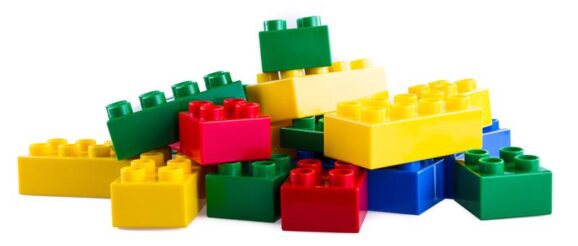How Lego built its culture of innovation, brick by brick – CMO Australia

Give a group of children a pile of plastic bricks and they will instinctively start building. With some experimentation, they might soon produce something recognisable.
There are no mistakes when children play – just a series of iterations and lessons that get them to a result.
With so many organisations now striving to build a culture of innovation, could the same process work for a group of adults?
David Gram spent a lot of time working with plastic bricks in his roles as marketing director for Lego’s Future Lab and senior innovation director at its Creative Play Lab. He describes his role as having been focused on radical innovation, and building a capability to explore future territories, particularly focused on possibilities in the digital realm.
“One thing that helped with my position at Lego was to have Lego bricks at the meetings,” Gram says.
“Most adults have played with Lego bricks or something similar as a child, and naturally start wanting to build something. You don’t want to think about it and have debates about it, you want to build it, and you don’t know what it is going to look like.
“That becomes playful, and allows the team to explore.”
By adopting a similar mindset for innovation sessions, Gram says it is possible to put aside traditional notions of success and failure and just get on with creating outcomes, with no expectation that the first answer is the best answer.
It is a technique he has been refining in his time since leaving Lego, as part of a quest to see if the disciplines he learned in one of the world’s most valuable companies can be applied at scale elsewhere.
“One of the key learnings I picked up from Lego is how to create a culture of creative confidence and exploration,” Gram says. “Lego was inspired from the very end users it is servicing, and how kids are learning.”
Speaking ahead of his keynote appearance at the Accelerate World conference in Melbourne on 20 June, Gram described how he has recently run workshops in using Lego bricks and other materials. He is adamant marketers and other professionals striving for innovative outcomes can learn much from the playfulness of children.
“All of a sudden as a group, they open up and start sharing and start building together, and become more visionary in their mindset and approach,” Gram says. “So adding tools and materials that allow for building and creating and play – combined with the right ways of measuring the results of that work – and it becomes a real way that you work, no matter what industry you are in.
“You need to have a playful experimenting approach. And if companies can move in that direction, I think they become resilient to almost any change.”
In his work as a consultant, Gram has witnessed an increasing interest from all levels within organisations to take a more playful approach to their working lives, and this should be encouraged and harnessed.
“And if you can tap into that, even at the c-level, and make your work more inspiring, fun, interesting and rewarding – the demand is there,” Gram says. “The question is whether they are ready to take the first step.”
Lego itself passed through a near-death experience in 2003, teetering on the verge of bankruptcy following a series of missteps. Although these occurred before his time with the company, Gram says this period revealed some lasting lessons for the company.
“The mission the company has today was formulated back then, which is really about empowering kids and developing their creativity, confidence and ability,” Gram says. “The first lesson is the mission is about them, and not the company itself. And that transcends the existing products and services, and has a more long-term focus.
“The second was understanding the company’s own core capability – what is that we are really truly good at, and let’s leverage that more. And that is what they have been doing now for years very, very effectively. If you don’t know these things, you have a hard time setting a strategy, and innovation becomes something that happens randomly in all directions.”
Those two key learnings underscored the work of Gram in the creating the Lab, and acted as guidelines that enabled him and his team to extend the Lego concept into the digital realm.
Gram says the Lab itself was set up as a separate entity within Lego, as simply borrowing people from across the organisation would fail to achieve the right level of focus. However, he says through that process he soon learned it is possible to take the concept of independence too far.
“When I was part of starting the first Lab we thought that it should be quite secret, and you needed a special security card to get in,” Gram says. “And that completely backfired, because the rest of the organisation started hating it.
“In the end we figured out this needs to be the most open department in the whole company, and more transparent in terms of what we are doing. You need to entirely open up these radical innovation departments, both within the company and outside the company, and invite in stakeholders as often as possible to take part and see what is going on. Because that is part of the ‘onboarding’ of the organisation to the new future. They need to be taken on the new journey from the beginning, not just the end.”
Follow CMO on Twitter: @CMOAustralia, take part in the CMO conversation on LinkedIn: CMO ANZ, join us on Facebook: https://www.facebook.com/CMOAustralia, or check us out on Google+:google.com/+CmoAu
